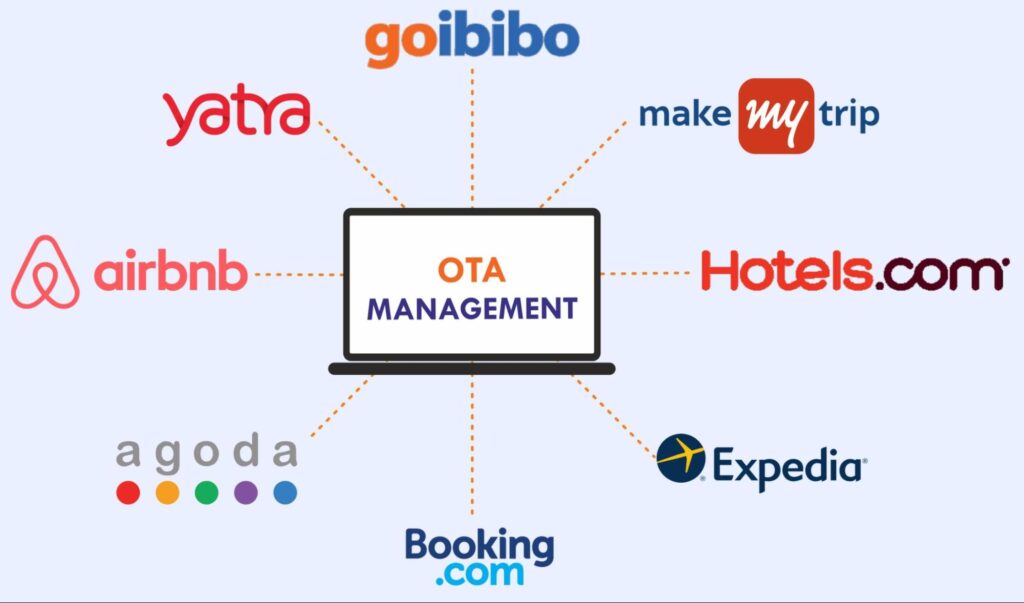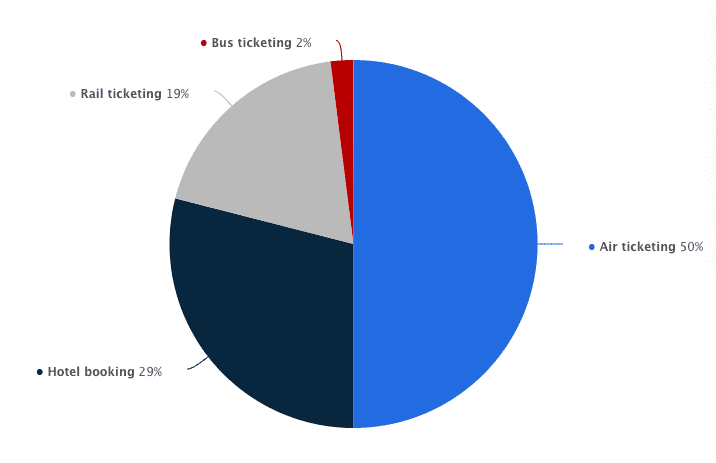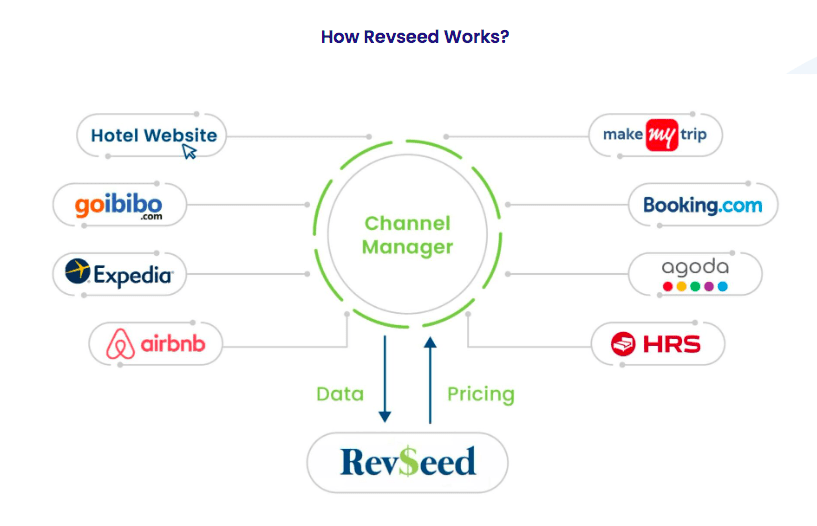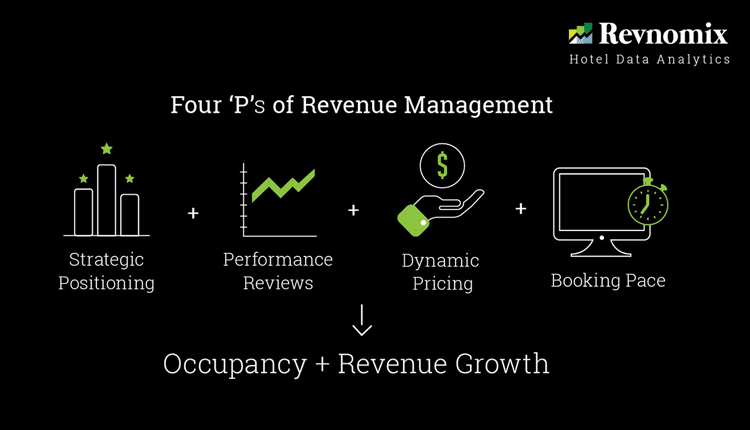
Revenue management used to signify opening and closing availability and pricing, but it has now evolved into a rather popular buzzword in the hotel industry. When online travel agency OTA emerged on the scene, the market grew focused on easy rate changes. Keep in mind this truth as the (RM) revenue management process develops. Only 12,000 – 15,000 hotels employ a major (RMS) tech nowadays. The other 500,000+ hotels use either revenue management tools or an Excel sheet they can customize.
In the next five years, hotels that do not already use an RMS tool will start adopting solutions at a high rate than they did in the previous ten years. Hotels are now starting to implement revenue management systems, policies, and more. The field has evolved into a true science thanks to tech. Many duties needed for RM can now be handled by powerful computers. The spread and growth of the Internet have altered basic hotel and traveler relations.
Call the Best Revenue Management & OTA Management Company in India
OTAs include Expedia, Priceline, Orbitz, Booking.com, Hotels.com, and OneTravel among many others. The key goal of these OTAs is to create more exposure for your brand than you could achieve on your own. 60% of travelers compare hotels before making a booking, making OTAs the perfect for revenue. In fact, the hotel industry has come to know that OTAs and hotels operate in a mutually beneficial way to foster and promote one another’s growth. Hotels use OTAs as their online distribution partners because they have a large ad budget, access to more traveler data, and a higher success rate of attracting online visitors.
In order to keep up with how OTAs are evolving, your revenue management strategy will need to be both more rigid and more flexible. This indicates that OTA management holds a key position in the mix of pricing and revenue management. It does imply that their function is evolving in certain key areas and that the industry will experience changes in the future that you cannot imagine at this time. Looking for the online travel agency market share in India? Read below.

Image credit – Statista.
Key Statistics
1. The online travel agency market size in India was 2580 billion INR in 2020.
2. As per a survey by Rakuten Insight in 2020, 61% of Indians between 45 and 54 years had used an online travel agency.
3. In the age group 16 to 24 years, only 40% of people had used an OTA and 12% had never heard of OTAs before.
4. Booking.com topped the list of OTAs in terms of revenue worldwide in 2020. It recorded $6.8 billion as per Statista.
Check Out the Revenue Management Benefits for Our Clients
What is OTA Management?
Every hotel in the world strives to increase its revenue and profits. To achieve this, hotels must have the right room at the right time and location for the right person. That is the main goal of the revenue management concept. An online travel agency is referred to as an OTA. It is a website that people visit to browse and purchase travel-related goods and services. Hotels use a global distribution system (GDS) for OTA listings of their rooms and to optimize bookings.
In 2019, OTAs made up 51% of all hotel bookings, while direct bookings were only 49%. So what does OTA mean in terms of RM? OTA is a channel of distribution for hotels and airlines. Using methods to increase revenue and profits in a specific market is called OTA in revenue management. We already know why revenue management is important from previous articles. In simple terms, OTA revenue management is the ability to build your package by choosing the flights, hotels, and activities you’d like to do while traveling and or having the right travel package at the right time for the right person.
The success of many hotel owners depends on OTAs. They play a key part in the travel sector. It enables online bookings for travel packages, airline tickets, activities, and car rentals. It’s crucial to note that an OTA doesn’t offer travel products. Rather, it serves as a link between suppliers and customers, selling hotel rooms and other travel-related items on behalf of other firms.
OTAs are important because they give hotels access to customers who might not otherwise be in contact. An OTA can be viewed from the standpoint of the user as a complete travel platform that enables them to book rooms, book flights, read reviews, and find hotels all in one place. Because of this, OTA management is very popular and hotel owners must make an effort to try to meet their target audience where they are. Searching for the best online travel agency software or revenue management software? Or finding the best revenue management solutions for hotels? Click below.
Request a Demo for the Best Revenue Management Services
How Can You Increase Your Hotel Bookings Through OTA Management?

OTA Channel Manager by Revnomix.
Even while the online travel agency business is a vital distribution channel in the present era, they do not guarantee success on its own. So it is crucial to follow some best OTA management practices. You’ll discover ten ideas for increasing OTA hotel booking below.
[Suggested Read: Ultimate Guide: Revenue Management System Vs Revenue Manager]
1. Choose the Right OTA Mix
Finding the ideal OTA mix is a crucial first step in ensuring that you are reaching your target customers. This entails doing thorough research on many OTAs before working with the best ones. It also involves managing distribution to maximize your hotel’s revenue and profit.
One OTA may provide superior access to the market in North America, which is the key point to keep in mind in this case. Another might provide better access to customers in Europe or Asia. Millennials may be more attracted to some OTAs than Gen X are to others. Make an effort to ensure your OTA mix enables you to locate the customers you require. It is possible when you rely on OTA management.
2. Use Revenue Management Systems for Hotels for Distribution
An RMS helps you to control all of your distribution channels from one location. By using one, you can avoid having to go to each OTA alone and make changes to things like hotel rates or room availability. This can make it easy to set up a much more dynamic pricing approach. Depending on what you are looking for, you can change prices on a single OTA or all OTAs at once. Adjusting to spikes or dips in demand for your hotel rooms is made simple by the ability to do this fast in real time.
3. Build Good Relations with Market Managers
While OTAs give customers a wide range of self-service options, people in the hotel sector need to know that dealing with an OTA involves dealing with the human element. Building deep ties with market managers is a good example of this. You might need to host market managers at your hotel or take them out to lunch in order to do this.
Market managers will be more eager to work with you in return, aiding you in creating ad tactics and identifying patterns relating to your hotel. It can help you identify where you are doing well and where you are failing. A Market Manager can drive your hotel’s demand and OTA management so make it worth their while.
4. Add Stunning Photos
A picture is worth a thousand words when promoting a hotel to potential guests. A strong first impression may be created and the benefits of your hotel can be shown with the use of high-quality images. But when taking hotel photos, there are a few best practices to keep in mind.
Use the best tools and note your hotel’s top features. Take pictures of guests having a good time at your hotel rather than empty rooms. And spend some time setting everything up how you want it to seem. If you’re taking pictures outside, choose the right time of day to either show beautiful weather or nighttime views.
Discover Successful Client Stories of Revenue Management Outsourcing
5. Make Your Hotel Description Stand Out
Customers who use an OTA or OTA management are going to look at other hotels, so you need to make yours stand out. It is crucial in addition to using images that show the hotel’s elements. You must be specific about the kind of hotel you run and the services it provides. But you should also try to be unique.
Consider the types of customers you are aiming for and engage them in chat. Make sure your description indicates that you are “family-oriented” if you are targeting families. Do not forget that you are not limited to describing the hotel. Mention the local landmarks and promote the ease of your hotel’s location.
6. Identify your Competitors
Due to the intense competition in the hotel sector, your hotel and its primary competitors will be competing for the same clients on the same OTA in hotel management. It is crucial to spend time learning about your competition and what they have to offer clients for this reason.
This can involve doing independent research, reading online reviews, and keeping an eye on prices. Based on what other hotels charge, you should check to make sure you are neither overcharging nor undercharging for your rooms. And if you can find flaws in competing hotels, you can begin to attract the guests they are losing through OTA management.
7. The Perfect Price at the Perfect Time
You must charge the correct price at the right time in order to adopt the proper pricing strategy for hotels and increase hotel bookings through OTAs. Setting prices based on demand and keeping price parity across all distribution channels are the two basic pricing methods.
The first method is to forecast demand using historic data, current bookings, and broad industry trends. You can charge more when there is a large demand while cutting costs when there is a low demand can aid in filling your hotel. Being allowed onto many OTA platforms requires price parity (the same rates for the same room on all the distribution channels and your own website). Even so, you should use caution when choosing your standard rate because many OTA channels will impose varying commissions on the same room rates.
Explore Our Team of Experts For Hotel Revenue Management Solutions
8. Monitor Customer Reviews
You must take the time to monitor your guest reviews because many customers look at online feedback before making bookings. Delivering a superb customer experience, encouraging your visitors to submit reviews, and replying to comments are just a few methods to do this.
Make an effort to right away notice any common issues and attempt to address the problems. Make sure all of the data about your hotel is current so that guests do not have unrealistic expectations. And avoid being defensive. Instead of blaming the client or denying the issue even exists, it is best to admit your errors and work to improve.
9. Take Benefit of OTA Promotions
Making use of some of the special deals is one way the hotel sector may get the most from what OTAs have to offer. This is crucial when there is little demand and keeping rooms filled takes priority.
Some of the options include paying for better positioning on OTA search engines or launching ad campaigns that target specific age groups at specific times. You might be able to pay high commissions in exchange for more exposure or take part in exclusive discount promos that some OTAs or OTA management firms provide.
10. Examine your OTA Results
Finally, even if you use the advice given, it’s doubtful that you’ll design the ideal OTA management plan the first time. To gain an overview of how your hotel is doing, what is working well, and where there is potential for growth, it is crucial to analyze your results on a regular basis.
Spend time keeping an eye on the results and, if required, changing pricing. Keep track of which OTAs produce the best ROIs for you and which ones fall short. Keep track of key trends and talk to the various market managers about new or alternate options. Still, looking for the top hotel revenue management company for OTA management? Read till the end.
Learn About Revseed – The Best Hotel Revenue Management Software
Brief History of OTA Management & A List of Major OTAs
Booking a trip required a phone call, an in-person visit, or both to a travel agent in a retail location or a booking agent at an airport counter before the advent of the internet. Consumers weren’t able to start looking for and making travel plans on their own until the internet really took off.
Through the second part of the 1990s, there was an increase in interest in the consumer internet as it moved from being something you did at work to something you did at home. Due to investors dumping money into anything with a “.com” in the name, the dot com bubble caused valuations to soar to unbearable heights. The dot.com bust in March 2000, which left dozens of firms bankrupt was the end result of this obsession. Investors lost money, and tech suffered in terms of reputation. Also, travel slowed, which led to a quiet time for online travel.
By 2002, there had been a second wave of transition brought on by the recovery of the economy from the disaster. These firms were not only leaner and meaner and better able to defeat weak rivals, but they were also gaining from Moore’s Law of increased speed and rising home internet penetration.
A period of fast change gave way to an age of fusion. It witnessed a sharp rise in market share among a few popular firms that employed M&A to pursue expansion in both supply and demand. It was eventually boosted by the release of the iPhone in 2007.
There are now only three main holding firms that dominate 95% of the market for OTAs and related travel websites (such as metasearch, rental cars, and restaurant bookings):
1. With its Name, Your Own Price function, Priceline.com gave birth to Booking Holdings in 1997. Since then, it has developed into the industry leader in online travel, with Booking.com providing the bulk of its revenue. Among other websites, it also owns Agoda, Kayak, Cheapflights, Rentalcars.com, Momondo, and OpenTable.
2. Microsoft created Expedia Group in 1996. It was later split out in 1999. It also owns Hotels.com, Hotwire.com, Orbitz, Travelocity, Trivago, and Venere.com, in addition to its flagship website, Expedia.com.
3. Ctrip was founded in 1999 and rose to fame in China. With the purchase of Trip.com in 2017 and Skyscanner in 2016, it recently increased its global presence.
4. An up-and-coming player in the OTA market is Airbnb, which started as a website for home-sharing in 2006. Its 2018, purchase of Hotel Tonight sped up the expansion of its hotel supply work, and its continued investments in experiences support its stated goal of competing globally as an OTA.
Today, it’s getting hard for fresh rivals to gather the resources to compete on a large scale. Expedia and Booking jointly spent almost $10 billion on ads in 2018. Due to their ongoing hold on both the supply and demand sides of the market, OTAs are impossible for startups to compete with. As a result, the industry is under close regulatory scrutiny.
The debate about privacy rights first started in the European Union in 2012. The General Data Privacy Regulation (GDPR), which signaled a change in tone about how data is kept online, took effect in 2016 and served as the debate’s end.
A 2016 report titled “Online Platforms in the Digital Single Market” by EU regulators noted the dominant nature of online platforms. The analysis was based on interviews with those in the industry. It marked the invincible competitive moat that the major firms have developed over time — often with somewhat dubious conduct. As a result, a number of regulatory changes have been made in the UK, while the AHLA in the US has launched a broad consumer awareness campaign. The period of deeper awareness and regulatory momentum had really started. Hence, OTA management is more important than ever. There are many hotel revenue management companies. But are you also searching for the best hotel revenue management strategies?
[Read More: 5 Ways to Boost Hotel Value with Revenue Management Strategies]
Conclusion: Advantages of OTA Management & Why it is Important in Revenue Management
Why then have OTAs been able to capture such a sizable portion of the travel demand and put themselves in the middle of customers and suppliers? And why do they still continue to rule? When viewed through the eyes of three vital parts, it comes down to traveler preference:
1. Variety – Consumers prefer to have all of their options in one location above everything others. They want the assurance that they are viewing all of the options for a certain search. It lessens uncertainty.
2. Price – Second, customers want the option to compare prices. Prices are easy to compare when all the options are in one location. The need to open many windows to compare various hotel websites is reduced by OTAs.
3. User Experience – Finally, these options and pricing comparisons are presented in a user-friendly interface that puts an emphasis on rich material. The user experience is constant between devices.
In contrast to hotels, OTAs optimized the user experience as they put their clients at the center of their operations. Hotels found it hard to keep up with the digital shifts brought on by e-commerce and mobile buying, while OTAs provided customers with what they wanted and surpassed them. Hotels will continue to be at a disadvantage as long as they are not present on major OTAs.
Do you want to improve visibility on OTAs? Are you looking for expert revenue managers for OTA management? Want to know more about the online travel agency list in India? Unable to find the best hotel revenue management systems? Or a revenue management company in India? Contact Revnomix for steady growth in Average Daily Revenue (ADR) and Length of Stay (LOS) from OTAs.







